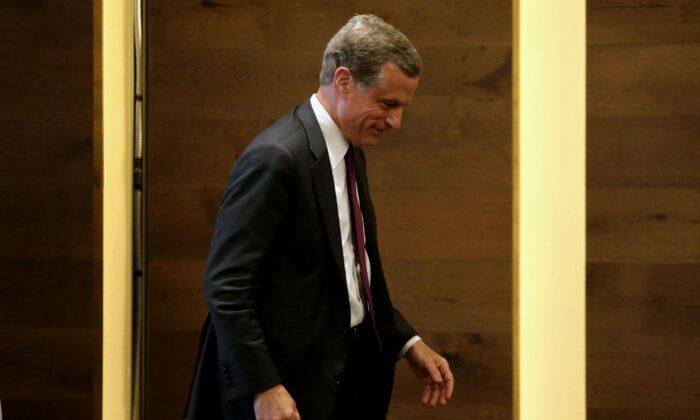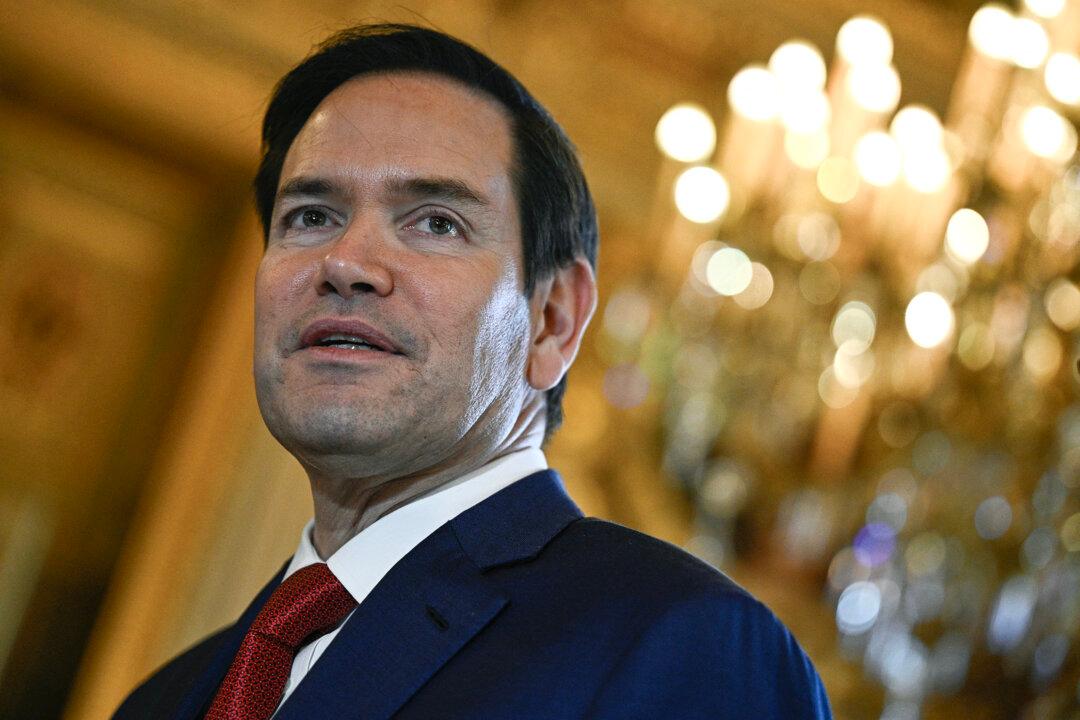Former Federal Reserve Bank of Dallas President Robert Kaplan said that the regional banking crisis may be more serious than commonly believed and called for the central bank to pause its rate hiking cycle to give policymakers more time to address the risks.
“I’d prefer to do what’s called the hawkish pause, not raise but signal that we are in a tightening stance, because I actually think the banking situation may well be more serious than we currently understand,” Kaplan said.
The former Fed official’s remarks come as the much-anticipated Federal Open Market Committee (FOMC) policy meeting on May 2–3 is poised to culminate in a decision to raise interest rates by another quarter point.
Since the Fed launched the current tightening cycle in March 2022 in response to soaring inflation, policymakers have raised rates by 475 basis points. That’s the fastest pace of raising rates since the 1980s.
Investors generally expect the central bank to leave rates high for some time before cutting later this year in light of slowing economic growth.
Kaplan said that it’s more important that the Fed can sustain the current level of interest rates for “an extended period of time, longer than the market thinks” rather than pushing for another one or two rate hikes and then risk having to cut rates, a move that he said would be “very troubling.”
The former Fed official also said that, in order to get inflation under control, Washington needs to rein in out-of-control spending as this works against what the central bank is doing with its interest rate hikes.
His remarks came on the heels of a regional bank stock rout following the decision of U.S. regulators to seize First Republic Bank and facilitate its takeover by JPMorgan Chase.
‘Fundamental Weaknesses’
While Kaplan did not elaborate on the lingering risks that remain unaddressed in the regional banking crisis, a series of recent bank failures—including Silicon Valley Bank (SVB) and First Republic Bank—have highlighted what some experts say is a tradeoff between raising interest rates to quash inflation and financial sector stability.Bivens argues that higher interest rates have led to greater instability in the banking sector because the fragility of the banking system has made it difficult for banks to adjust to the new interest rate regime. This is leading to increased stress and instability in the sector, which can dampen lending and reduce consumer spending and business investment.
“The U.S. banking sector continues to have fundamental weaknesses that have been contained due to liquidity injections and short term loans,” Daniel Lacalle, chief economist at hedge fund Tressis, told The Epoch Times in an emailed statement.
“But the core problem remains: the profitable asset base has been destroyed by years of negative real rates,” Lacalle added.
Negative real rates occur when nominal interest rates—those typically quoted by banks on loans and other financial products—are lower than the rate of inflation. Banks have a harder time making profits when interest rates are high.
Some analysts have pointed out that many banks took added risks to increase investment returns during years of very low interest rates and some may have failed to hedge against the risk of rising interest rates.
“Deposit outflows have also forced banks to sell assets at a loss that they had intended to hold to maturity in order to generate the cash required to cover deposit withdrawals,” Ben Johnston, chief operating officer of Kapitus, a provider of financing for small and medium-sized businesses, told The Epoch Times in an emailed statement.
Lawmakers Call for Fed to Pause
A group of lawmakers have urged the Fed to stop raising interest rates to avoid additional damage to the U.S. economy.Ten senators and representatives, led by Sen. Elizabeth Warren (D-Mass.) and Rep. Pramila Jayapal (D-Wash.), expressed concern about the Fed’s current monetary-policy initiatives and how these tightening efforts could trigger a recession.
The lawmakers argued that an “overreaction” in the form of pushing rates higher could leave the economy more “vulnerable.”
“We strongly urge you to respect the Fed’s dual mandate, pause your rate hikes, and avoid engineering a recession that destroys jobs and crushes small businesses.”
The U.S. officials argued that recent economic data suggest that additional rate hikes would be “unnecessary” and “needlessly threaten” the economy’s progress.
The report found that consumers will pay around $31.7 billion in extra interest charges over the next year due to the central bank’s cumulative 475 basis points in rate hikes since March 2022.
Another quarter-point hike would bring the annual cost impact on consumers to $33.4 billion in total, according to WalletHub.





